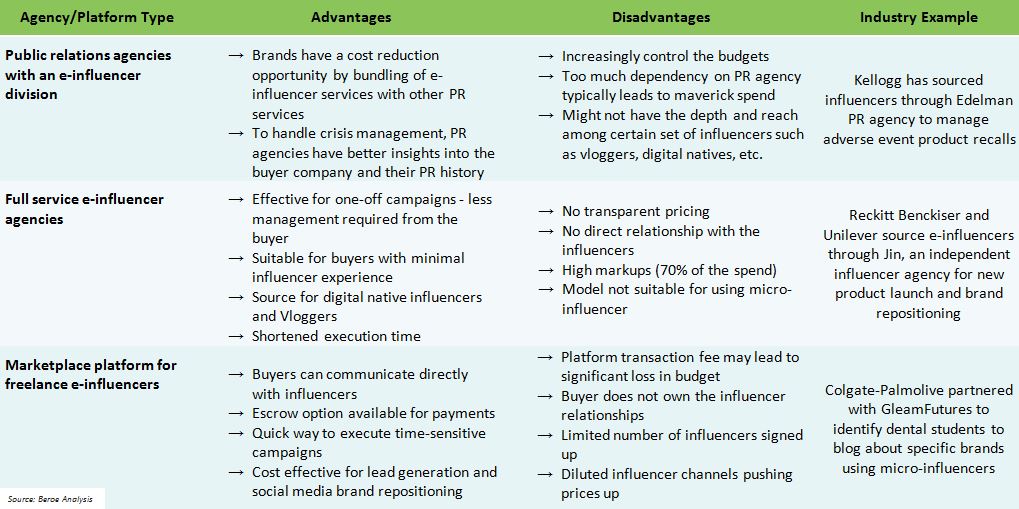
Procuring e-influencer services help buyers improve their brand reach

Abstract
An e-influencer can target consumer segments that are usually challenging for brands. Studies have revealed that marketing-inspired word-of-mouth generates more than twice the sales of paid advertising, and these customers have 37 percent higher retention rate. Influencer marketing saw explosive growth in 2016 with 86 percent of marketers having used the tactic and 94 percent of them finding it effective.
This article will throw light on how global Fortune 500 players create a decision framework to zero-in on the best suited agency/platform type for their e-influencer activities based on various use-case scenarios.
The different types of agencies/platforms providing e- influencer services taken into consideration are:
- PR agencies with an e-influencer division
- Full service e-influencer agencies
- Marketplace platform for freelance e-influencers
Influencer marketing – the background
Influencer marketing is a form of marketing that identifies and targets individuals who have influence over potential buyers. Similarly e-influencers are individuals who can influence the purchase decision of their peers via their blogs and social network channels. The preferred social channels for these influencers are Facebook, Twitter, Instagram, Snapchat, Pinterest, Blogs and Google+. Influencer marketing used to be placed under public relations budget. However, as independent influencer platforms evolved, advertising budgets were used to fund these services.
Key procurement trends of e-influencer services
Micro influencers: These are general social media users with a modest number of followers (usually in thousands or tens of thousands), but can hyper-engage audiences. Reckitt Benckiser Group looked at the ROI of one YouTube video vs. 25 micro-influencers. Though the reach was same, in many cases, the engagement was exponentially higher for niche influencers.
Influencers as content creators: CPG brands such as Unilever and P&G are increasingly using influencers as a virtual content creation staff with the aim of turning brand-owned sites into content hubs with dynamic compelling stories, images and videos.
Spend allocation: Greater spend is being allocated to influencer strategy and consistent procurement than ad-hoc procurement globally. Colgate-Palmolive has significantly accelerated the allocation of funds towards influencer marketing through longer term procurement agreement with Edelman PR.
Agencies/Platforms that provide e-influencer services
The trend of e-influencers has led to a variety of platforms and service providers that aim to help the Fortune500 brands in giving access to uncharted target audience.
When do brands use e-influencers?
Conclusion
There is 75 percent increase in allocation of the marketing budget for e-influencer activities by Fortune 500 buyers in 2017.
- For handling crisis management subservices, firms continue working with PR agencies to procure relevant e-influencers
- For new product launch and brand development activities firms prefer to work with full service e-influencer agencies since there is a brand/influencer fit to be assessed
- For lead and social media content generation, firms procure freelancers through marketplace platforms
Related Insights:
View All
Get more stories like this
Subscirbe for more news,updates and insights from Beroe









